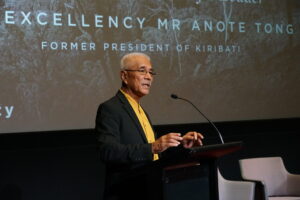Economist Matt Grudnoff outlines the ‘progress’ made since the royal commission.

The final report from the Royal Commission into Aged Care Quality and Safety was delivered in March 2021. The stories that came out of the royal commission process were horrific and, sadly, unsurprising. It laid bare the terrible emergency that had been ongoing in aged care for decades. It was also an emergency that should never have happened.
The royal commission also came with a comprehensive set of recommendations to reform the sector and ensure that it didn’t happen again. It was an opportunity to reset aged care and make sure the future was very different from the past.
But in politics, there are few words that are more overused than ‘reform’. Reform in the political arena reminds me of the old joke that a classic of literature is a book everyone wants to have read but no-one wants to read. Reform is something that every politician wants to have done but none of them want to do.
With both sides of politics having perfected scare campaigns and enough voters seemingly happy to buy into them to swing elections, reform has become a lot harder. Gone are the reforming eras of the 1970s and `80s. But failing to reform means things just drift along and, as the royal commission clearly identified, that creates its own problems.
The stories from the royal commission did create a powerful groundswell of support for large-scale reform. And large-scale reform is what the royal commission found was needed. To fully implement all the reforms would cost about $20 billion in extra funding each year. A bare minimum to fix the problems would require more like $10 billion in extra funding each year.
With the release of the May budget, we got the government’s response to the royal commission. Treasurer Josh Frydenberg announced with much fanfare that it would be putting an additional $17.7 billion into the aged care sector. A closer inspection of the numbers revealed that this would be over five years. That amounts to about $3.5 billion per year. Well short of the minimum $10 billion required.
The government was quick to counter the criticism that it wasn’t enough by saying that it had to be fiscally responsible. But what is more fiscally responsible – spending an additional $3.5 billion a year and failing to solve the problem or spending $10 billion a year and actually fixing it?
The government also claimed that it was providing record funding for aged care. Whenever you hear a politician say they are providing record funding for something, they’re trying to pull the wool over your eyes with a meaningless statement. Populations and prices go up each year. This means that just to keep up with the current level of care per person, every year would need to be a year of record funding.
Worse, it is possible to have a year of record funding where the quality of care per person is falling. If the funding doesn’t keep up with the growth in population and the increase in prices, but is still slightly higher than last year, then it is still a year of record funding. Record funding is a meaningless statement made only by politicians and says nothing about the care provided.
But perhaps I’m being too harsh. Budgets are about priorities and perhaps the government could simply not find an extra $10 billion a year with all the competing priorities. That is, after all, a lot of money. Of course, in a few years the government will hand out the stage three tax cuts worth $16 billion a year. More than half of those tax cuts go to the top 20 per cent of taxpayers. Budgets are indeed about priorities.
The lack of dollars translates into a lack of care. A good example of this was the waiting list for Home Care Packages (HCP). The government announced an additional 80,000 HCPs, which sounded great – until you realised it would take two years to deliver them and the waiting list at the end of last year (2020) was 97,000. It simply won’t fix the problem.
Of most concern since the May Budget announcement has been how things have gone ominously silent. We might think the government is earnestly beavering away in the background, implementing the royal commission’s suggested reforms, ensuring that the horrible stories that were uncovered will never happen again.
This would be a reasonable assumption if the government had a track record of achievement after announcements. But the current government has perfected the art of looking busy. It makes lots of announcements without actually following through. I fear that hearing nothing means that nothing is happening.
After all, reform is hard. It requires a plan, and dedication. The royal commission provided the government with the plan, but does it have the dedication to follow through?
Between the Lines Newsletter
The biggest stories and the best analysis from the team at the Australia Institute, delivered to your inbox every fortnight.
You might also like
Victoria’s Electoral Laws Need Truth in Advertising and Fair Rules for New Entrants
Victoria should adopt truth in political advertising and address the unfairness created by its donation cap and public funding model.
The Intergenerational Report shows a massive shift towards supporting wealthier individuals’ retirements
Jim Chalmers suggests the superannuation system is the intergenerational “genius” but it really means providing more support for wealthier people who do not need it.
Navigating Australia & the Campaign to End Coal | Anote Tong
Climate change is the greatest moral challenge that humanity has ever had to face, and for those of us who have the capacity to stop it, are we going to do it?

